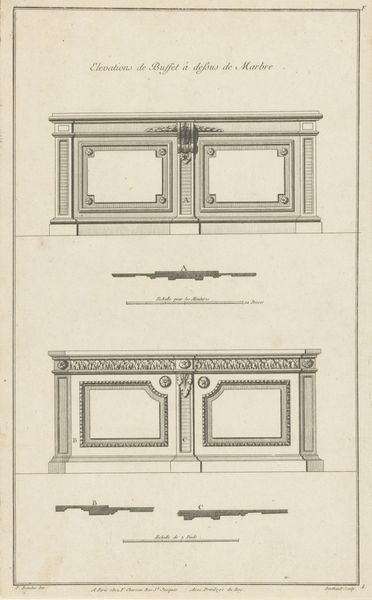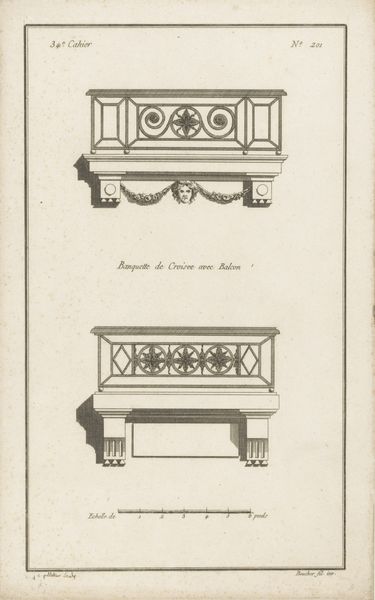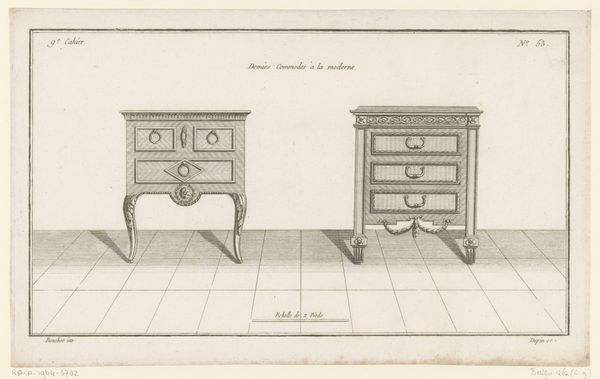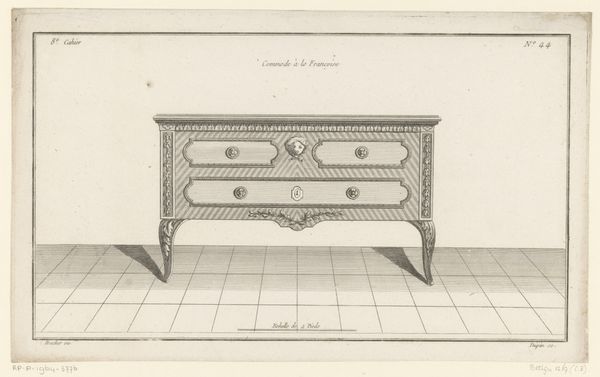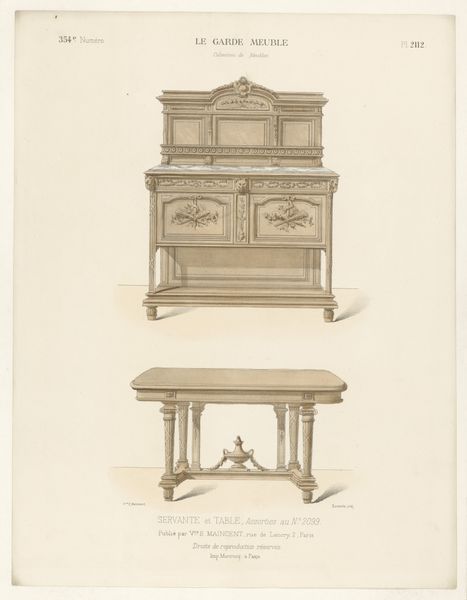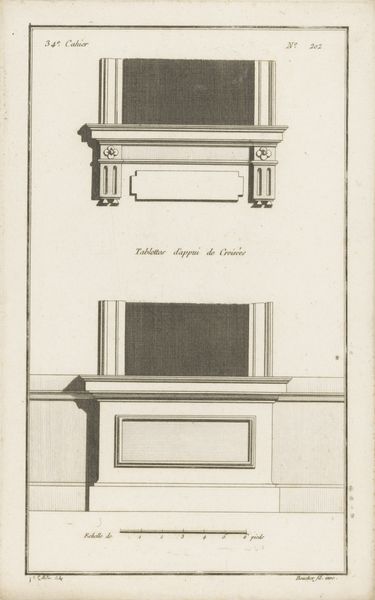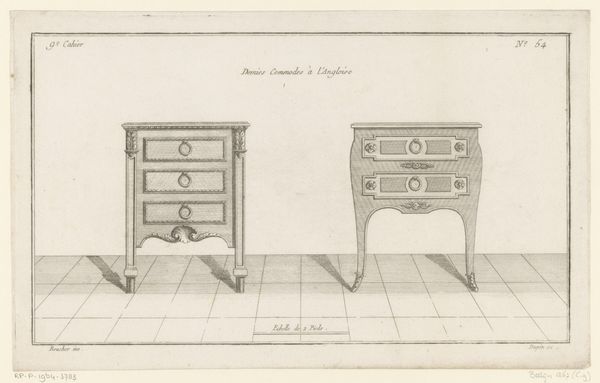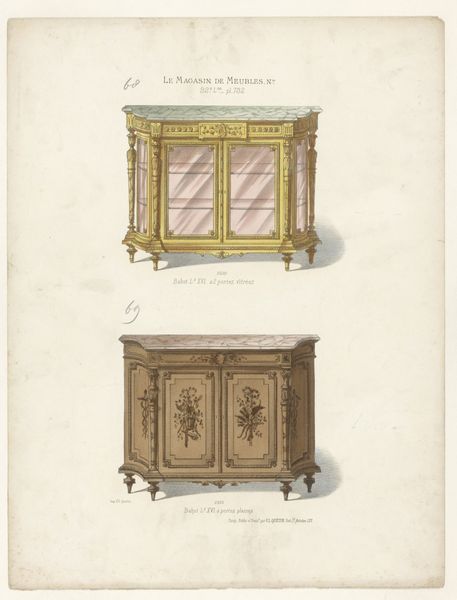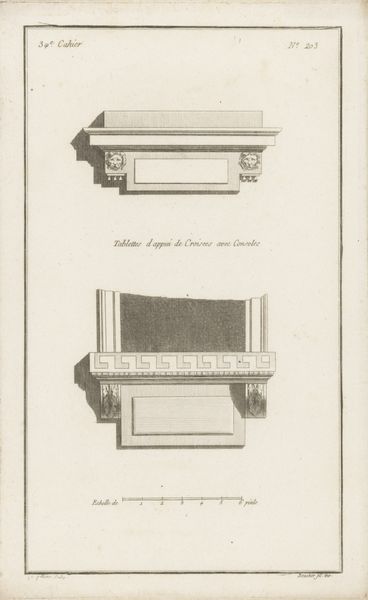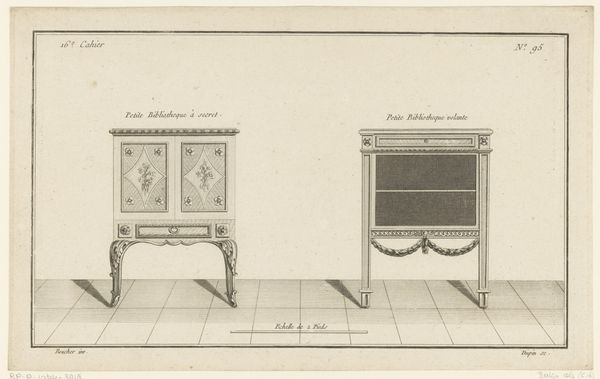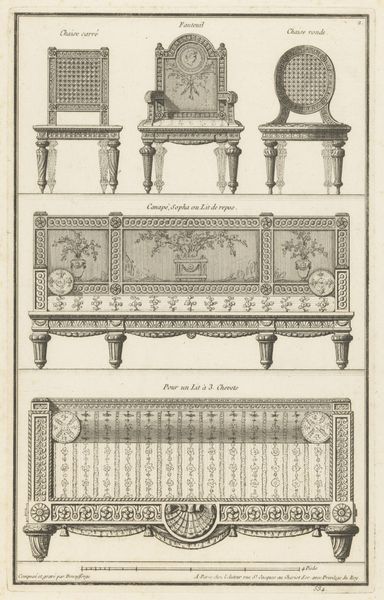
drawing, print, paper, ink
#
drawing
#
neoclacissism
# print
#
paper
#
ink
#
geometric
Dimensions: height 362 mm, width 223 mm
Copyright: Rijks Museum: Open Domain
Curator: Let’s delve into this print, "Twee commodes met guirlandes," made sometime between 1752 and 1794, attributed to Pierre Gabriel Berthault. It's currently held at the Rijksmuseum. Editor: So, this print showcases two different commode designs. They both seem very… precise, almost technical. The garlands soften the geometric lines, but it still feels very formal. What do you make of it? Curator: I see a negotiation between artistic expression and industrial production. The medium, ink on paper, is relatively inexpensive. What social strata do you think owned the final product, the commodes? Editor: Considering the detail and the Neoclassical style, probably upper class. But you are focusing on the mass production process. Why? Curator: This print is itself a step in that process. Think about the labor involved: the artist designing, the engraver translating that design. It served as a blueprint, dictating how raw materials would be transformed, challenging traditional boundaries of "high art." Who benefits? Whose labor is extracted in making these commodes and these designs available? Editor: I guess it highlights the role of design in shaping consumption and social status. I hadn't really considered how much labour goes into this process. It goes beyond just the visual appeal. Curator: Exactly! It reveals how taste and class are manufactured, quite literally, through design, material choices, and the labour that binds them together. Editor: That’s fascinating. I’ll definitely look at similar design prints differently now. Thank you for helping to see that today. Curator: A pleasure. It's crucial to understand the material realities behind even the seemingly most refined aesthetics.
Comments
No comments
Be the first to comment and join the conversation on the ultimate creative platform.
